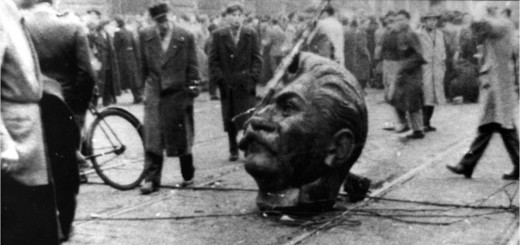How about a round of applause for us?

Many decades ago, when I was still young and cocksure, a professor asked me, “Don’t you ever agree with anything I say.” I replied that I almost always agreed, but didn’t see any point in saying so. Afer all he was the professor, and I was just a sophomore.
I’ve mellowed somewhat over the years, but the critical gene has not been completely suppressed. Like the proverbial Jew, who washed up on an island, builds two shuls – the second because one also needs a shul in which one does not daven – I sometimes become too focused on what needs fixing in our community.
That critical streak is modulated by the fact that I also write for the secular public, and in that role I consciously try to explain how radically different a life connected to Hashem through Torah is from one without Torah. That helps me not lose the forest for the trees.
But when writing internally, the critical streak quickly returns. All the various communities in Israel tend to avoid addressing their own shortcomings by pointing to the failures of the others. And I have no interest in joining that trend by becoming the cheerleader for the Torah community. And so I’ve tended to concentrate on how we as a community and individuals (myself very much included) can better realize our own Torah ideals.
To avoid excessive bile and negativity, I try to highlight those extraordinary individuals and organizations who have dedicated themselves to solving just about any communal problem one can name, especially when they have developed models that can be emulated by others.
Perhaps I’m mellowing, but it now strikes me that our community, like our children, also needs positive reinforcement. And that we should all step back from time to time to reflect on what is extraordinary about the Torah community, not just on what still needs improvement.
CHIEF AMONG OUR CAUSES FOR COMMUNAL REJOICING is the vibrant world of Torah learning that has been built over the past half century, almost from nothing. There are hundreds of avreichim in Israel today, many of them virtually unknown outside a narrow circle, with a mastery of much of Shas. I know one avreich in his early ’20s, who has not only completed Bavli many times but Yerushalmi as well.
Every Shabbos afternoon, I have to walk no more than two minutes to hear a still young gadol hold a large audience, including many maggidei shiur, spellbound for nearly two hours (four on Chol HaMoed), as he speaks without notes, quoting dozens of sources in their exact language, on his way to his dazzling conclusion. He is unique, but not alone. Numerous works of lomdus produced by young talmidei chachamim still in their ’30s or early ’40s have sold thousands of copies.
Our families are another cause for celebration. Travelling around the Gallilee or the Golan during bein hazemanimm, one is surrounded by large frum families wherever one goes. The summer vacations or day trips of many of these families may be no frills, bargain basement affairs, but the commitment to doing things as families testifies to the strength of our familial bonds.
ONE ASPECT OF THE TORAH COMMUNITY that never ceases to amaze me is the number of those who are driven by a desire to reach out to help others. Last week, in the space of a few hours, someone called me up to discuss the possibility of using the economic clout of the community to force a reduction of bank charges that cost poor chareidi customers thousands of desperately needed shekels a year. Someone else wanted to discuss what can be done for the new immigrants from France to ensure that they do not lose all their traditions as part of the absorption process.
And yet a third had an idea for creating special phone chavrusos to prepare non-religious Jews for the Yom Noraim by familiarizing them with the Machzor. With such preparation, he is convinced many secular Israelis who have an impulse to daven on Rosh Hashanah and Yom Kippur, but who are held back by their lack of familiarity with the services, would actually go to shul.
Recently, an advertisement appeared in the two largest chareidi newspapers. It sought avreichim at least 35 years old, with a broad knowledge of Shas, poskim, and aggadadot, who have experience giving classes to audiences from a wide variety of backgrounds. Applicants and their wives would have to commit to living in completely non-religious urban neighborhoods.
That ad generated 200 responses within 24 hours. The overwhelming majority of those responding were maggidei shiurim, roshei kollel, authors of seforim – in short, from the elite of the community.
The organization that placed the ad, Ayelet HaShachar, has already placed more than fifty couples on kibbutzim and moshavim in the past few years, and runs a program of 7,000 weekly phone chavrusas between frum Jews and secular Israelis. This latest venture is an attempt to test the model from kibbutzim in a more anomic urban setting.
As it happens, I just spent last Shabbos in a secular Jerusalem neighborhood. Even though I was in the home of good friends, and we had no trouble finding a good-sized minyan, I still found the experience of being out of my familiar religious enclave jarring.
But those who responded to the ad, most of whom are living in no less insular neighborhoods than I, are willing to live in places where not only will no separate-seated buses ever reach, but in which they will have to create their own minyan, almost from scratch, if they want to daven in one.
They are willing to do so because they feel such a powerful need to share the beauty of Torah with their fellow Jews. Now that is extraordinary.
Rabbi Avigdor Nebenzahl writes in his drashos for Elul that joy in the performance of a mitzvah is not just hiddur in the mitzvah, but an essential component of the mitzvah itself. (Rabbi Yitzchak Hutner, zt”l, writes the same thing about zrizus in the performance of mitzvos.)
One of the expressions of that joy is a sense of overflow that must be shared with ones fellow Jews. That too is one of the beauties of our world.
Mishpacha, September 10 2008.




Rabbi, I was taught the answer to your question as a teenager by my great-aunt AH, an Auschwitz survivor whose husband and child perished in an act of unpeakable cruelty. She had a great yiddish expression, Torat Immecha, about a cow that gave milk every day, but when she tipped over the milk container, she got attention. At work, I hear ten “atta boys” are wiped out by ….
The news this week is about more milk on the ground, and not by accident; worse yet there is no outrage. Forget the guilty, sin is a fact of life; when it is justified, or even left alone, a society must worry.
I agree that we have a generation of many talmudic scholars who know shas and poskim inside out. They also give brilliant shiurim. However, I am more doubtful of scholars who are truly innovative with chiddushim that argue against previous generations. There is a stress in yeshivot on quantity but less on independent thinking
Eli, come with me to Rabbi Ariev Ozer’s Shabbos afternoon shiur, and let’s see if you still think that the yeshivos are not producing original thinkers today. And he is far from alone.
I love this piece. Your preface really hit thespot. It ecellently articulates the context needed to properly understand your pieces and not overly criticize the criticizer-commender.